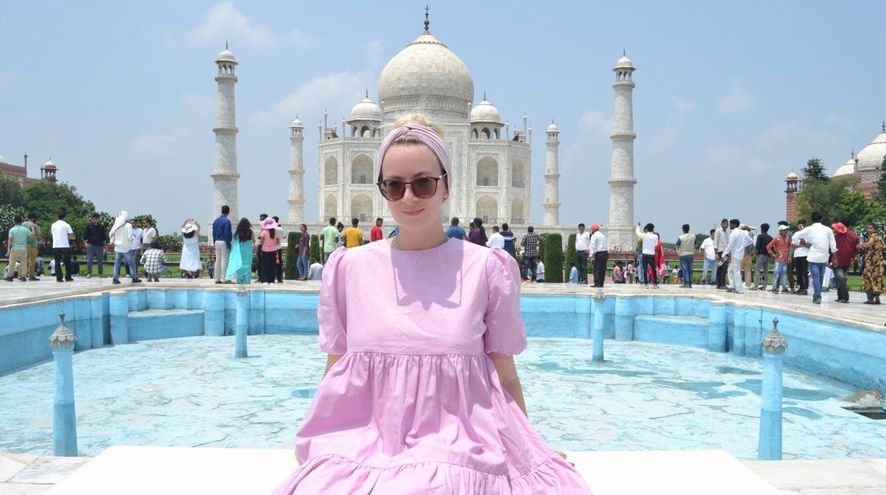Top 13 Traditional Indian Food to Try When in India

- Natalia
- From Russia
- Natalia
- From Russia
- natasa
- From Belarus
- Anna
- From Belarus
1. Kheer
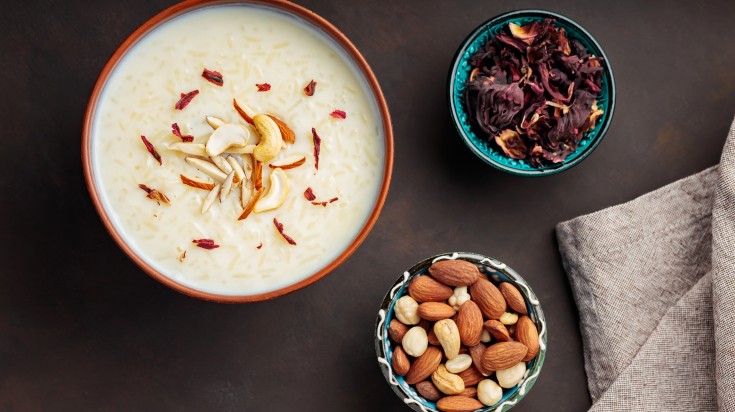
Say what:kh-eer
Kheer, an integral part of the Indian diet for over 2000 years, is a sweet, creamy rice pudding made primarily from milk, rice, and sugar. A handful of nuts, saffron, and cardamom are popular additions that provide complex texture and flavor. The rice ingredient in kheer is often substituted with tapioca pearl or wheat. In South India, it is known as pyasam. Other names include payesh, ksheeram, and doodhpak.
Kheer first originated as an offering at the Hindu Jagannath Temple in Orissa. The pudding would be distributed as prasad (favor) to templegoers after being presented to the gods. Today, kheer remains an important dish for festivals, as a sweet treat, or even a breakfast item across India.
Insider’s tip: Although you can try kheer almost anywhere in India, the best place to taste kheer is freshly made in a homestay or at a local sweet shop with a variety of kheer options on the menu.
2. Makki di Roti
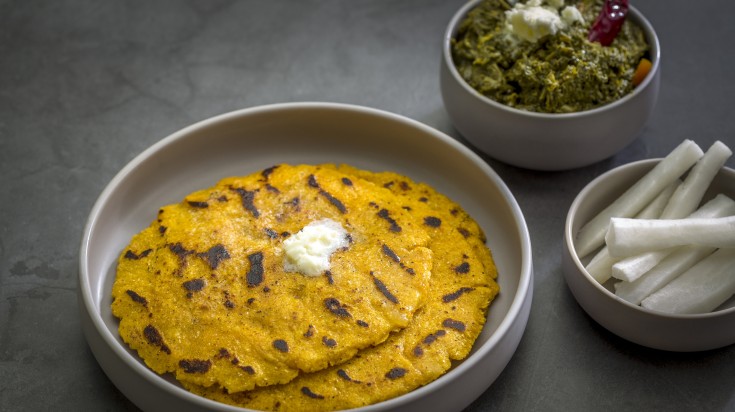
Say what:muk-kee dee roh-tee
True to the belief that the best Indian food comes from the North, makki di roti is a quintessential Punjabi cuisine delight. It is a cornmeal flatbread baked on an Indian griddle pan and generously smeared with ghee (clarified butter). This delicious flatbread pairs harmoniously with various sides but finds its perfect match in sarso da saag (spinach).
A staple in Punjabi kitchens, it's traditionally a breakfast item but is hearty enough for lunch or dinner. Cornmeal, the key ingredient, provides a unique texture and offers health benefits—it's fibrous and aids in blood sugar regulation. It is also gluten-free and an excellent alternative for those managing weight or diabetes.
Insider's tip: If ghee is unfamiliar to your diet, request a lighter smear or opt for a butter alternative to avoid potential indigestion.
3. Malai Kofta
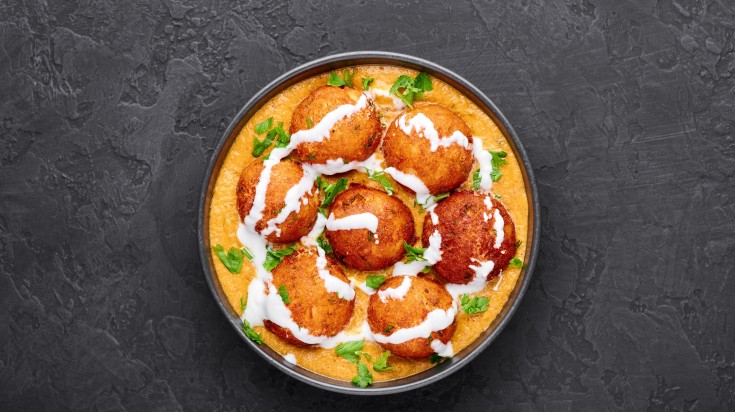
Say what: ma-lai kof-ta
Malai kofta, a popular entrée and Indian delicacy, traces its roots to Northern India, during the Mughal era. This delectable and mild curry offers a vegetarian twist to meatballs, featuring fried potato and paneer (cottage cheese) balls immersed in a rich and creamy mild gravy made with sweet onions and tomatoes.
Best enjoyed with plain basmati rice, jeera rice, or even naan, malai kofta stands out as one of India's most sought-after menu items. Although not a daily meal, it has secured its place as a favorite, often relished during restaurant visits, especially during lunch, as restaurant culture continues to grow in popularity across the country.
Insider’s tip: Most curry-based traditional Indian food recipes, although considered mild as per the Indian palate, could be spicy for outsiders. So, if you have a low spice tolerance, be sure to request the waiter to lower the spice in your malai kofta when placing your order.
4. Poha
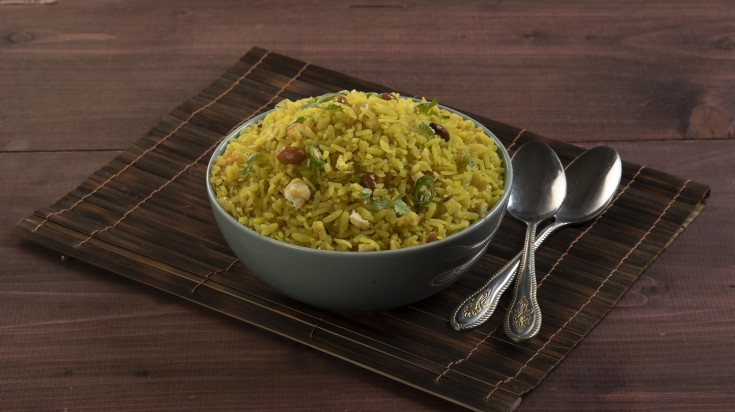
Say what:poh-ha
Poha, another popular food in India, traces its origins to the state of Maharashtra. This flattened rice dish undergoes parboiling before flattening, allowing it to be consumed with minimal to no cooking. The flavors of poha are often enhanced with vegetables, spices, nuts, or other mix-ins.
The origins of this dish trace back centuries to the era of the Holkar and Scindia royal dynasties in Maharashtra. Today, poha remains a popular breakfast or snack food, especially in Maharashtra and regions influenced by Marathi cuisine.
Insider’s tip: You can experience the authentic flavors of poha by trying it in local eateries of Mumbai, Pune, and Indore, or even attempt to make ready-to-go Pohas in your hotel room with a simple parboil.
5. Vada Pav
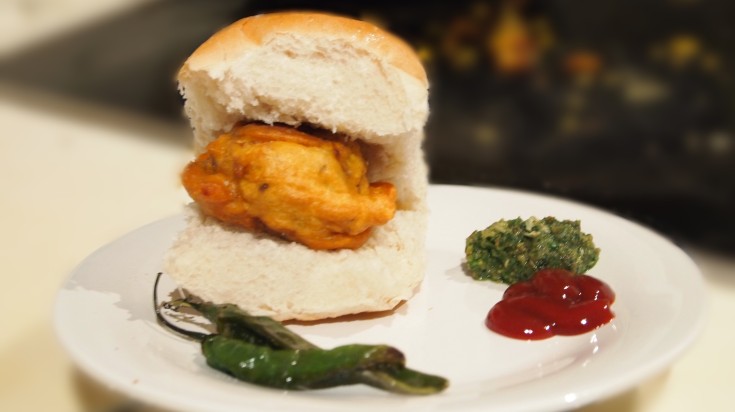
Say what:vah-da pao
Vada pav is a quick and flavorful street food, perfectly suited for the fast pace of Mumbai, the city of dreams. India's answer to veggie burgers, vada pav, features a deep-fried potato ball smashed inside a nearly halved bread bun. It's typically served with a variety of chutneys and a kick of green chili pepper. Affordability and portability make it a popular on-the-go choice found in every nook and cranny you choose to explore on your Mumbai tour.
Insider's tip: To truly savor the experience and make it a proper meal, pair your vada pav with a cup of aromatic masala chai or a refreshing lassi.
6. Dhokla
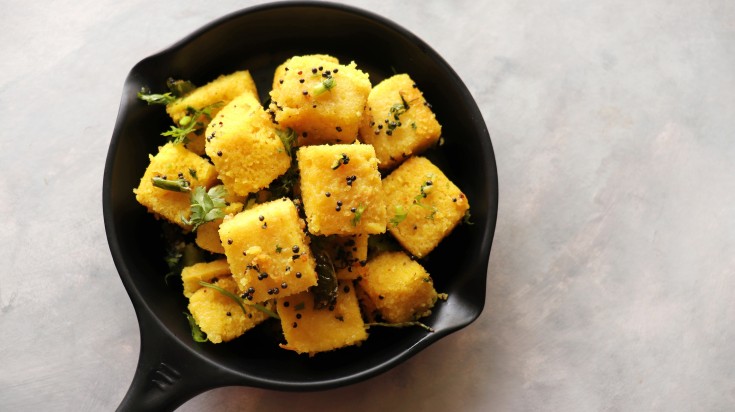
Say what: dhok-lah
Dhokla, one of the many delicious regional delicacies that make up Indian cuisine, is a savory sponge dish made up of a fermented batter of split lentils and rice as the main ingredients. Native to Gujarat, it is an ideal breakfast or snack option that can be served with chutneys or other accompaniments. If you are willing to explore, you could also try different versions of the traditional dhoklas, including khatta dhokla (tangy dhokla), rava dhokla (semolina dhokla), cheese dhokla, coconut dhokla, and more.
Insider’s tip: If you're on a diet, dhokla is a perfect addition to your weight loss plan because it is rich in protein, fiber, and other nutrients. Just make sure you stick to not more than two pieces.
7. Chole Bhature
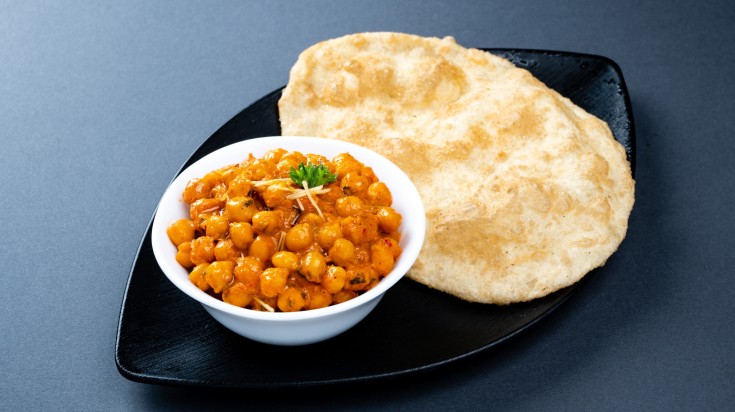
Say what:cho-lay bha-too-ray
Chole bhature, a culinary delight and a staple in Delhi, is a delectable combination dish that has captured many hearts and taste buds. The dish features deep-fried flatbread, known as bhatura, made with a blend of all-purpose flour and curd. It is perfectly complemented by a flavorful chickpea gravy, the chole, infused with Indian spices like red chili, ginger-garlic paste, and more.
While some claim the inception of chole bhature was in Delhi, others argue it was in eastern Uttar Pradesh. Regardless of its roots, chole bhature has become synonymous with the vibrant food culture in India. Widely enjoyed as a popular lunch option, the dish's crispy and soft textures and rich flavors create a truly satisfying experience.
Insider’s tip: To balance the indulgence, pair your chole bhature with a refreshing lassi; the yogurt-based drink helps cut down the richness of the fried bread and enhances the overall dining experience.
8. Kori Gassi (Mangalorean Chicken Curry)
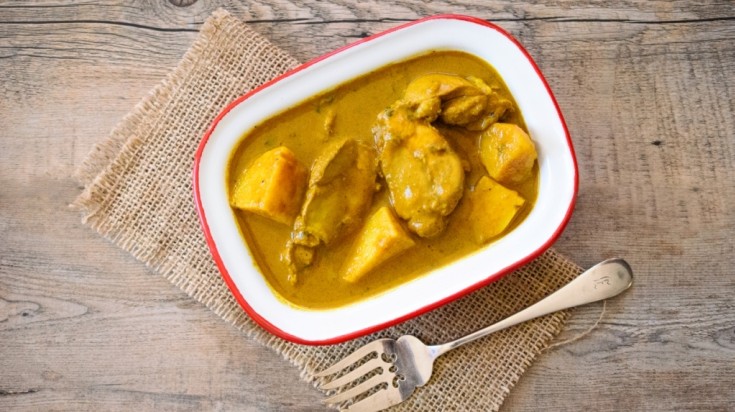
Say what:ko-ree gas-si
Although dishes like butter chicken and chicken tikka masala have put India on the world map, regional delicacies such as kori gassi (Mangalorean chicken curry) still astound visitors. Traditional South Indian food is heavy on using coconut in most dishes, and kori gassi is no different. This coconut-infused curry is a tantalizing blend of roasted chilies, spices, and creamy coconut milk, creating a harmonious marriage of flavors.
Originally a specialty among the Tulu-speaking Bunt community, kori gassi has transcended its origins and become a beloved dish across South India.
Insider’s tip: Kori gassi isn't a mainstream dish outside of Southern India. To savor the authentic flavors of this dish, head to Mangalore itself, explore cities in close proximity, or seek out a South Indian eatery anywhere else in the country.
9. Dosa
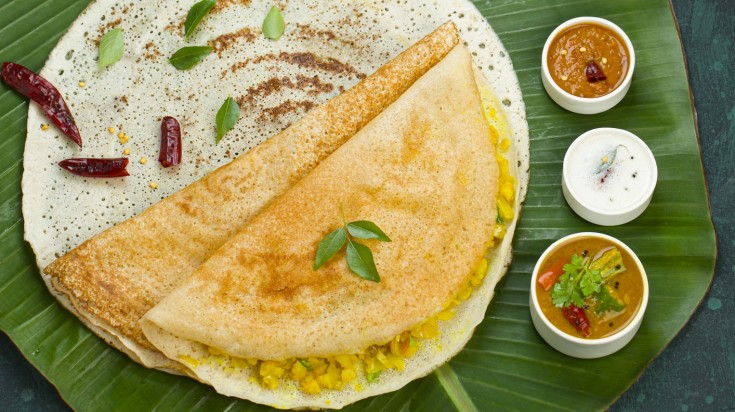
Say what:doh-sah
Widely acclaimed as the most popular South Indian dish, dosa has transcended borders to become a culinary sensation. Unlike kori gassi, dosa is a household name across India and even in neighboring countries like Bangladesh and Nepal, featuring prominently in South Indian restaurants.
Crafted from a fermented batter of ground black lentils and rice, Dosa is a thin, savory crepe that tantalizes the taste buds. Served with sambar or pickle, it's a culinary masterpiece with variations galore, including rava dosa (semolina dosa), masala dosa (spiced dosa), aloo dosa (potato dosa) and paper dosa (no filling dosa).
Insider's tip: Embrace Indian tradition by eating dosa with your hands. Tear off small bites and savor the delightful experience of this iconic dish, ditching cutleries.
10. Nihari
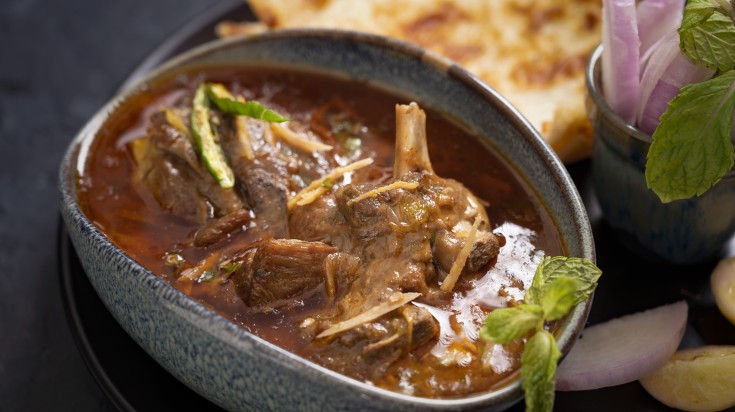
Say what:ni-ha-ri
Nihari, a winter delicacy with roots tracing back to Old Delhi, is a slow-cooked masterpiece that has stood the test of time. Originally presented as a breakfast delight to the Muslim nawabs (kings) of Lucknow and Delhi, nihari is a shank cut of mutton or lamb that is infused with various spices. The slow cooking technique is the secret behind Nihari's exquisite flavor, resulting in a deep and nuanced taste profile.
Muslim royalties indulged in nihari after their sunrise prayers, followed by a rejuvenating nap until the afternoon prayers. Served alongside an array of naans and tandoori roti, today, nihari stands as a timeless culinary tradition that is passed down to the Muslim communities across India and is now a shared joy among Indians coming from various walks of life.
Insider’s tip: For an authentic Nihari experience, head to the stalls in front of the Jama Masjid mosque in Old Delhi, where you'll find the best spots serving this culinary masterpiece.
11. Daal Baati Churma
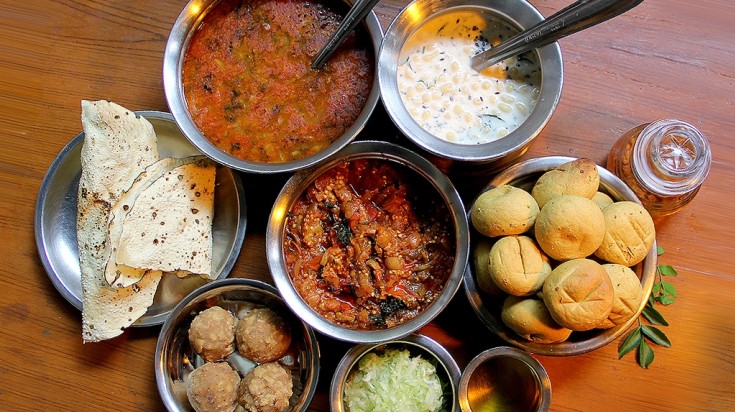
Say what:daal bah-tee choor-mah
Hailing from the Thar Desert in Rajasthan, daal baati churma stands as a quintessential Rajasthani delight. This regional cuisine draws its essence from the abundance of lentils and wheat crops in the arid landscape, making it a staple in the local culinary scene. The dish comprises three integral components: daal (lentils), baati (hard wheat rolls), and churma (powdered and sweetened cereal). Baati, the hard wheat rolls, even served as a wartime meal for Rajasthan's soldiers in the olden times. They would cleverly bury these dough balls under the sand for later consumption.
It is popularly consumed today in Rajasthan and Haryana, especially in festivals, marriage ceremonies, and housewarming.
Insider’s tip: Transform your dining experience into a journey of Rajasthani flavors by indulging in a complete Rajasthani thaali. This way, you get to relish daal baati churma and explore various other authentic Rajasthani delights in one hearty meal.
12. Mishti Doi
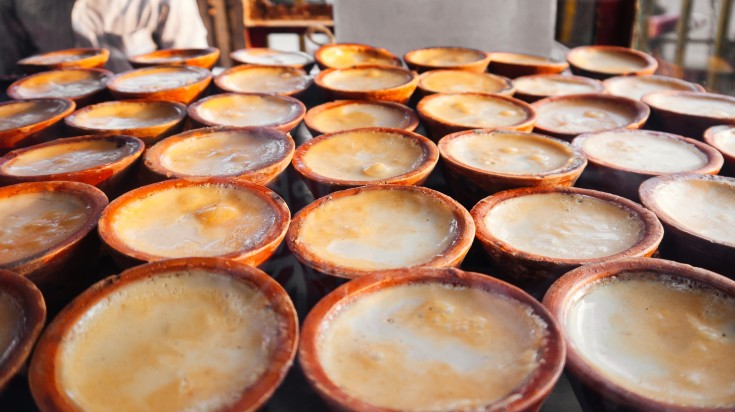
Say what:mish-tee dho-ee
Hailing from the Bengal region of India, mishti doi is a sweetened curd dish that embodies the essence of Bengali culinary delights. This delectable treat is crafted through a meticulous fermentation process. First, milk is skillfully thickened and reduced to perfection. Then, the sweet touch of palm jaggery is added, infusing the concoction with a rich, caramelized sweetness. Once the milk reaches a comforting warmth, two spoons full of curd are added, initiating the fermentation magic that gives mishti doi its unique texture and taste.
Traditionally served as a dessert after a meal, mishti doi encapsulates the warmth of Bengali hospitality in every spoonful.
Insider’s tip: Enhance your mishti doi indulgence by accompanying it with rasgulla or rosogolla (cottage cheese in sugar syrup), another extremely popular Bengali sweet dish.
13. Tharoi Thongba
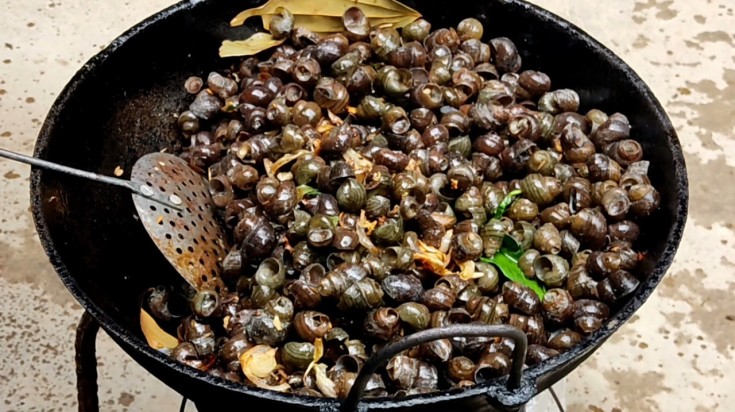
Say what:tho-roi thong-ba
In the realm of exotic Indian cuisine, tharoi thongba stands out as a culinary gem, distinctly different from the types of Indian food found anywhere other than the North East. What makes it a traditional Indian food is the fact that it has been consumed for centuries in Manipur. This snail curry is prepared in a spicy sauce seasoned with fermented fish and various strong herbs that lend it a pungent, complex flavor. The river snails are usually gathered from lakes, rivers, and farms with paddy fields after harvest season.
While tharoi thongba might be unfamiliar to many Indians, it is an integral part of Meitei cuisine in Manipur.
Insider’s tip: Balance the strong flavors of thorai thongba by enjoying this exotic curry with a bowl of rice or veggies on the side.
As you embark on your culinary expedition across India, the traditional Indian foods you savor offer a glimpse into the rich flavors waiting to be discovered. Whether savoring the slow-cooked brilliance of nihari in Old Delhi or indulging in the sweet embrace of mishti doi from Bengal, each dish is a portal to centuries-old culinary traditions and culinary excellence second to none.
Traveling to India for your culinary adventure soon? Fill out our customized trip form for India so you can curate your own experience

